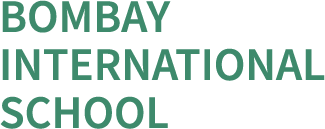By: Ms. Nita Luthria Row – Head, Junior School
“We learn best in moments of enjoyment.” — Ralph C. Smedley
As educators, we acknowledge this and we aim at creating a curriculum that is relevant, challenging and engaging.
Seymour Papert once said, “At best, school teaches a billionth of a percent of the knowledge in the universe, yet we quibble endlessly over which billionth of a percent is important.” This begs the question: what is important for students to learn and who decides this?
School curricula all over the world focus on filling children’s brains with vast amounts of information. They learn to parse sentences, solve equations, label diagrams, draw maps, memorize facts and definitions, and so on. Students are taught poems, more than one language, and they learn to answer questions, write essays and reports. Many schools nobly aim to offer their students a holistic curriculum and to that end, teach art and music and reserve time for physical education as well.
This sounds ideal; indeed, many students are fortunate enough to have competent teachers who ensure that their students may enjoy some, or even most, of the learning they do. Still, try and think about it from the perspective of the average student going through what is an average day in scores of schools. They enter school and are made to sit in rows of desks learning about one thing for 40 minutes and then have to switch to entirely a different subject. This goes on for approximately six to seven hours with a couple of breaks. No matter how much fun we might try and make it for them, it’s hard for most students to stay engaged throughout the day.
Let’s suppose that this is still a challenging and engaging education. We might even go so far as to call it ‘holistic’ (obvious objections notwithstanding). Still, we ought to ask ourselves: how much of this is really relevant or essential? Students might learn to write a beautifully structured response to Shylock’s plea for justice but do they stop and think about the times when they themselves might have judged someone on the basis of their race or religion? They might learn about the impact of climate change and global warming on the destruction of arctic habitats. Does this make them reflect on their own footprint on the earth and decide to do something about it (apart from making posters and writing clever slogans that only serve to put the onus of saving the earth on others)? The purpose of education has to be deeper than training students to become excellent exam-takers. Schools need to help students become skilled at problem-solving, decision making, and, above all, become better, more ethical, and kinder human beings.
So, what can we do?
Sir Ken Robinson once said, “Part of the adventure here is not just developing creativity in kids, but thinking about school in a different way.” This strikes me as an apt way to describe our current situation. The COVID-19 pandemic has forced schools to shut their physical campuses and open virtual ones. We have a great opportunity in front of us to reimagine school and education.
Instead, most schools are trying to replicate what was done in-person in a virtual space where this simply cannot work. It is just so much easier for students to both figuratively and literally “switch off”. Access to the internet with minimal oversight is awash with opportunity for distraction. Eminent educator, Dr. John Spencer, puts it aptly: “Learning isn’t like a file that converts between a .doc and a PDF.”
Any claims we might have had to a holistic, challenging and engaging education have started to look more tenuous. Doing things the old way is fast ceasing to be an option. So, what stops us from reimagining learning? Is it our lack of imagination, or our fear that our children will not be ready for what lies ahead?
As IB educators, we encourage our students to think about “What If”s”. Here are some that I came up with:
- What if we lifted learning from the shackles of convenient blocks or periods and let students decide when they were ready to move to the next subject or task?
- What if we stopped thinking of learning to be something that is confined within disciplinary boundaries?
- What if instead of forcing students to learn what is in our curriculum documents, we allowed them to engage in meaningful projects?
- What if they were given the time and the freedom to explore ways in which they could contribute to making the world a better place?
Virtual schooling is the best time for us to experiment and test out new techniques. There are a whole host of technological platforms that allow us to change the classroom radically in ways that were unthinkable in a physical classroom. A door we were familiar with might have shut, but we cannot ignore the countless windows that have opened.
The question is are we ready to take that risk?
Dedication: I would like to thank the wise and wonderful Edna Sackson whose blog posts have pushed and shaped my own thinking.



